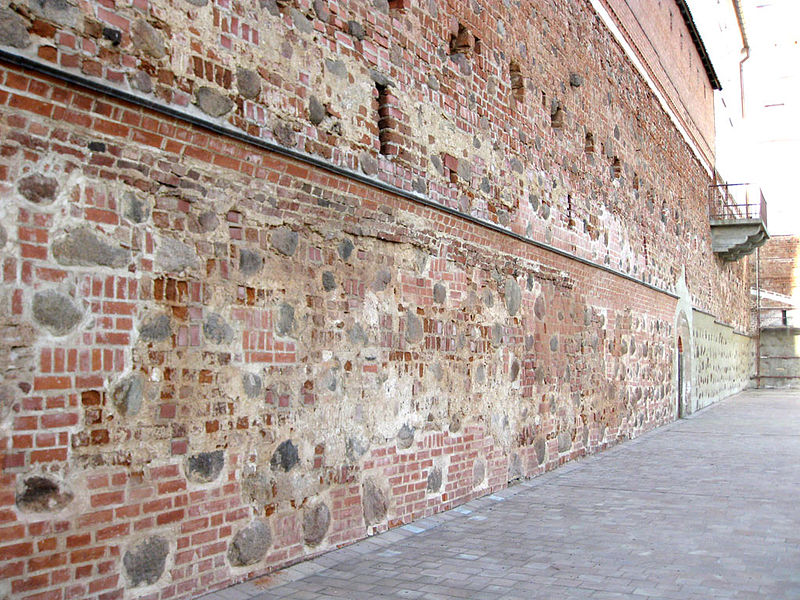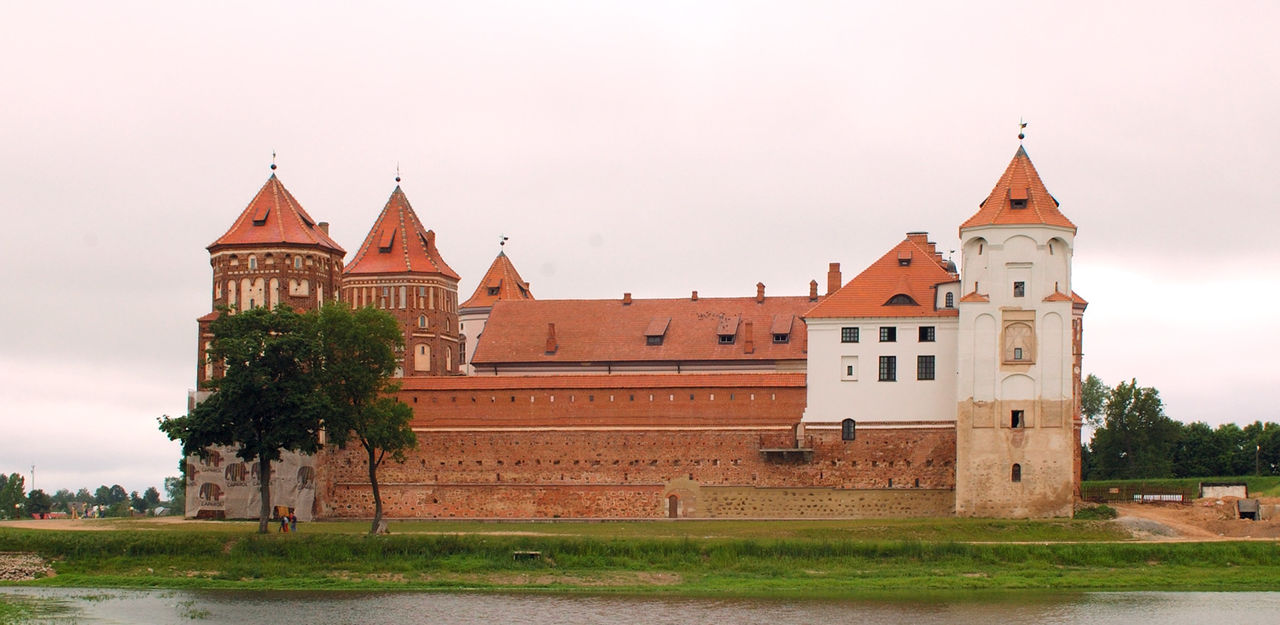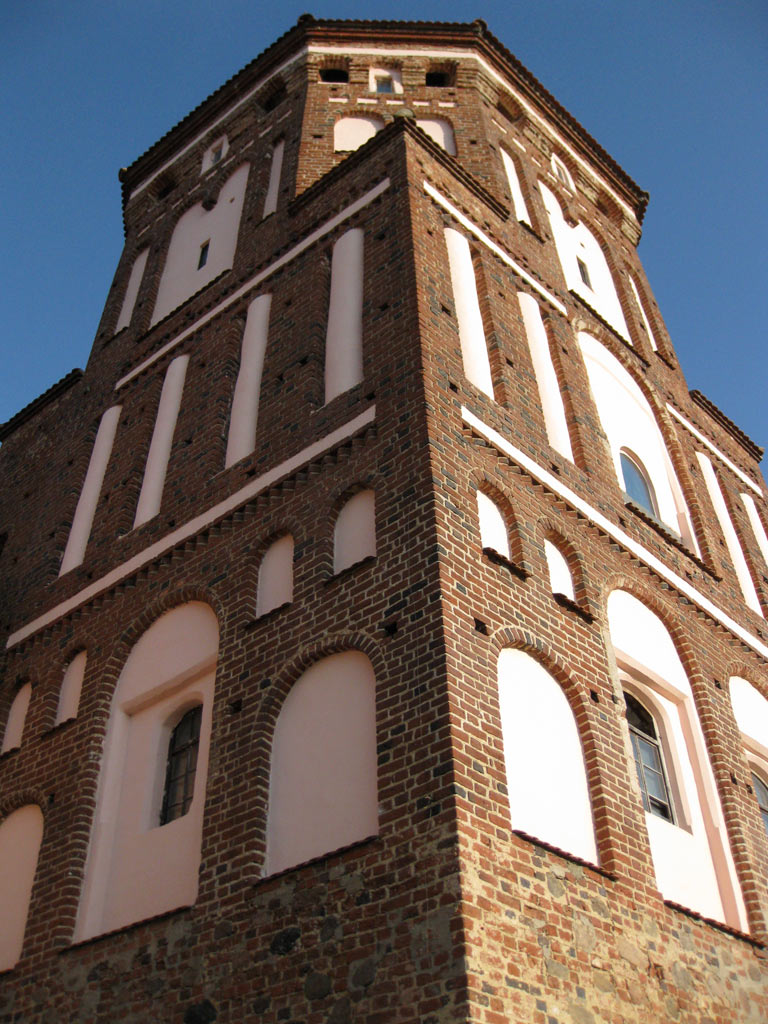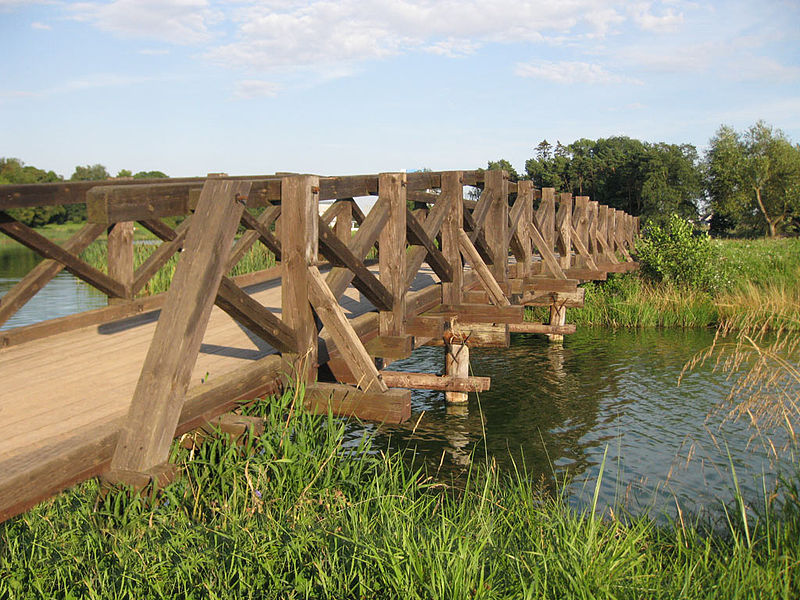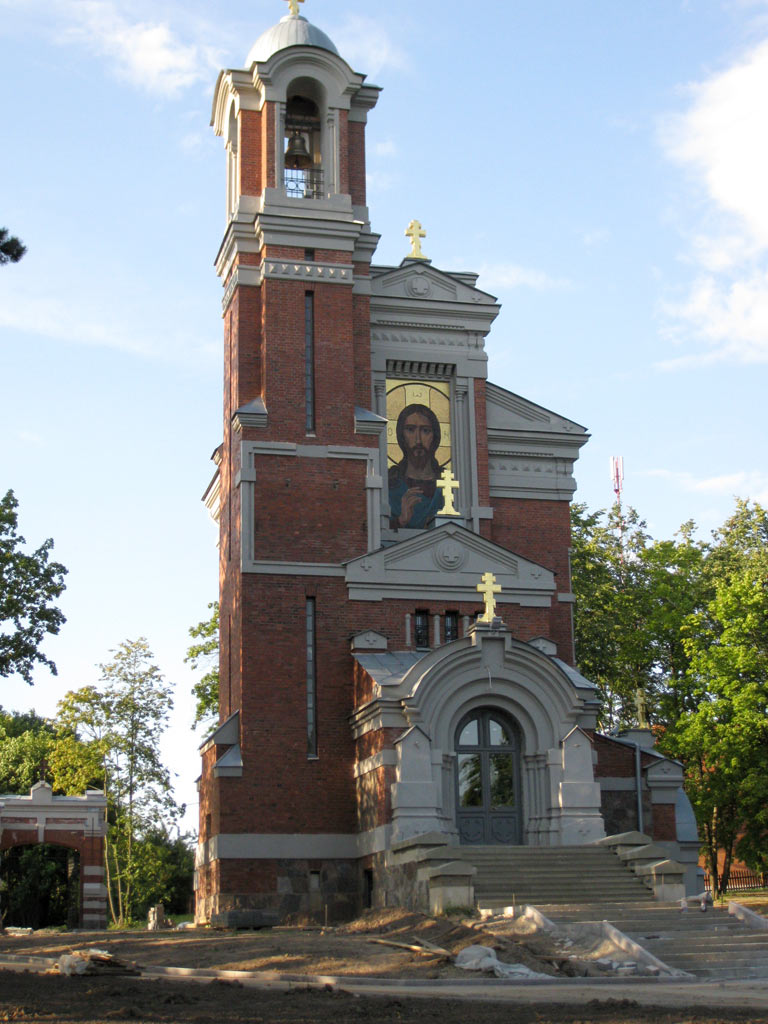The Mirsky Castle Complex is a UNESCO World Heritage site in Belarus. [1] It is located in the town of Mir, in the Karelichy District of the Hrodna voblast, at 53°27′4.46″N 26°28′22.80″E, 29 km to the north-west from another World Heritage site, Nesvizh Castle. Mir Castle Complex is situated at an elevation of 164 meters.
From 1921 to 1939 the castle was located in Poland.
Duke Yuri Ivanovich Ilyinich (pl:Jerzy Iwanowicz Ilinicz) began construction of the castle near the village of Mir after the turn of the 16th century in the Gothic architectural style. Five towers surrounded the courtyard of the citadel, the walls of which formed a square of 75 meters on each side. In 1568, when the Ilyinich dynasty died out, the Mir Castle passed into the hands of Mikołaj Krzysztof "the Orphan" Radziwiłł, who refitted it with a two-winged, three-story stately residence along the eastern and northern inner walls of the castle. Plastered facades were decorated with limestone portals, plates, balconies and porches in the Renaissance style.
In 1817, after the castle had been abandoned for nearly a century and had suffered severe damage in the Battle of Mir (1812), owner Dominik Hieronim Radziwiłł died of battle injuries and the castle passed to his daughter Stefania, who married Ludwig zu Sayn-Wittgenstein-Berleburg. Later the castle became a possession of their daughter Maria, who married Prince Chlodwig Hohenlohe-Schillingsfürst.
Their son, Maurice Hohenlohe-Schillingsfürst, sold the castle to Nikolai Svyatopolk-Mirsky, of the Bialynia clan, in 1895. Nikolai's son Mikhail began to rebuild the castle according to the plans of architect Teodor Bursze. The Svyatopolk-Mirsky family owned the castle until 1939, when the Soviet Union occupied eastern Poland.
When German forces invaded the Soviet Union in 1941, they occupied the castle and converted it to a ghetto for the local Jewish population, prior to their liquidation. Between 1944 and 1956, the castle was used as a housing facility, resulting in damage to the castle's interior.
In December 2000, the Mir Castle was listed by UNESCO as a World Heritage Site.




